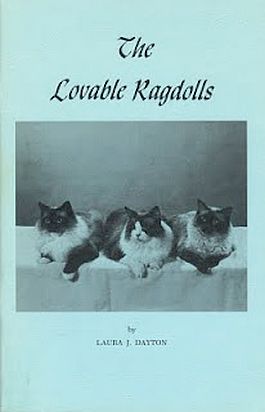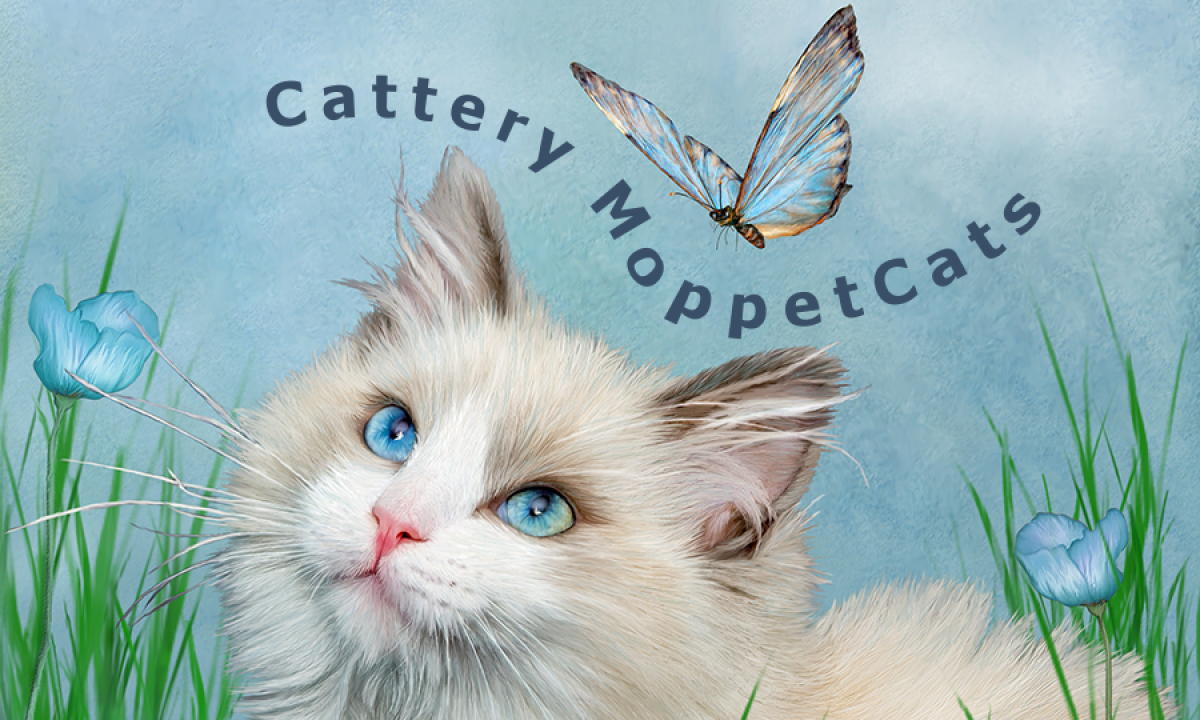Early UK Ragdoll History
By Suzanne Philbrick
Early March 1981 was an exciting time for British cat fanciers, who were about to discover a new, gentle, American cat breed. Ann Baker, a reported Persian breeder from Riverside, California had developed the breed in the 1960s by using the maternity and paternity services of Josephine, Blackie, and Beauty, all of which were a neighbor’s cats. The resulting litters were more docile than many other cats, and Ann attributed the kittens’ personality traits to their mother. Ann saw these kittens as something so extraordinary that she termed them “a phenomena”; moreover, she claimed that Josephine alone was the one to produce the phenomena when mated to only her children & descendants by different fathers.
Shortly thereafter, in November 1969, while working under the cattery prefix, “Raggedy Ann”, the breeder shared the phenomena with Laura and Denny Dayton from Thousand Oaks, California, who soon began their own Ragdoll cattery, Blossom-Time.
Such unique cats, Ann knew, would be appealing to even more cat fanciers, and on December 9, 1975, the United States Patent Office granted Ann Baker a Registered Trademark for her Ragdolls.
With both the Raggedy Ann and Blossom-Time catteries leading an enthusiastic charge, the Ragdoll breed gained popularity in the United States throughout the 1970s, and readers of cat fancier magazines worldwide were introduced to the world’s sweetest cats.
One of those readers was Pat Brownsell, a breeder of Siamese cats and the first to import Maine Coons to the United Kingdom.
An early 1971 Raggedy Ann Cattery Magazine Ad :

According to The Definitive Guide to Ragdolls by Lorna Wallace, Robin Pickering, and David Pollard, Pat first learned of the Ragdoll breed from an American cat magazine. Later, during an Autumn 1980 visit to Lulu Rowley, Pat showed her friend a copy of the magazine and explained what she knew about the fledgling breed. Like Pat, Lulu was intrigued. Together, the ladies made plans to acquire their own Ragdolls.
Advertisement for independent breeders, including Blossom-Time :

At first Pat and Lulu struggled to find an American Ragdoll breeder who would respond to their information requests, but they did not allow that to dissuade them. Through persistence and resourcefulness, the pair tracked down a telephone number for Laura and Denny Dayton of Blossom-Time. Soon afterward, the Daytons sent Pat and Lulu ample correspondence, which included details of care and management, a comprehensive genetic chart and a booklet written by Laura Dayton entitled The Lovable Ragdoll (sic). With the help and passion of the Daytons behind them, Pat and Lulu began making arrangements to own the very first four Ragdolls exported from the United States.
The years 1981 and 1982 were to be of pivotal importance for the Ragdoll breed. Lulu Rowley, owner of the original Petil-Lu prefix, describes the events:
From a warm and sunny 80 degrees F March afternoon in California USA, a pair of Ragdoll Kittens were lovingly taken to L.A. International Airport, to start their long journey by T.W.A. to Heathrow.
The Ragdolls were greeted with the usual English climate of cold winds and raw atmosphere, and stayed overnight at quarantine premises in Colchester, and the next morning, they completed their journey to the Norfolk Quarantine Kennels, where they began their six months detention, in a heated room.
On my first visit, I found they were all I hoped for, and we made good friends immediately, they had good appetite, lively and in excellent condition, which in a way is a compliment to their breeders, Laura and Denny Dayton (sic).
Jacket cover of The Lovable Ragdoll by Laura Dayton :

Lulu’s male, Lad, was a seal colorpoint born to Blossom-Time Happy (also a seal colorpoint) and Blossom-Time Tinker Belle, a blue point mitted on October 12, 1980. Lass, Lulu’s seal point mitted female, emerged from Blossom-Time Boldo, who was a seal point mitted, and a seal point bicolor dam, Blossom-Time Camellia, on October 15, 1980. Both Lad and Lass had been registered with The American Cat Council on January 28, 1981. While the pair waited in quarantine together, Lass became pregnant, and on July 28, 1981, Lulu was informed that three seal colorpoint female kittens had been safely delivered. The first family of UK Ragdolls was released from quarantine on September 9, 1981. The American breed was on its way to becoming a beloved world sensation.
Denny Dayton readies Lad and Lass for export to the UK :

While Lulu was able to see her new Ragdolls in March 1981, Pat Brownsell, whose cattery prefix was Patriarca, had to wait a bit longer for her imports. Pat’s kittens, which were to be named Blossom-Time Prim and Blossom-Time Proper, were much younger than Lad and Lass. The female of the duo, Prim, was a seal colorpoint also out of Blossom-Time Happy and Blossom-Time Sparkle, a seal point mitted, and entered the world on March 16, 1981. Proper, a chocolate point bicolor born May 3, 1981, was sired by Blossom-Time Pistil, also a chocolate point bicolor; his mother was a seal colorpoint, Blossom-Time Marjoram. Like Lad and Lass, Prim and Proper quickly set out to become parents. However, celebration turned to sadness when Prim delivered five kittens a week prematurely, and Pat was unable to save them. Undefeated, Pat worked hard to get Prim back into good breeding condition. Her efforts paid off on July 19, 1982 when Prim gave birth to Rags to Riches, Ragsoma, and Ragadita, three seal colorpoint females.
Blossom-Time Prim and Proper :

With the importation of the first four Ragdolls to the UK, Lulu and Pat realized that the breed would become increasingly popular among cat fanciers. Their foresight prompted them to obtain additional Ragdolls from the Daytons in August 1981. The Definitive Guide to Ragdolls lists this second wave of Blossom-Time imports as seal colorpoint male Romeo, seal point mitted female Juliet, seal colorpoint female Myrtie, chocolate bicolor male Pistil, seal bicolor female Camellia, and lilac mid-high white male Bananas. The third wave of Blossom-Time imports to Lulu and Pat was composed of a seal point mitted female, Spring, and a seal colorpoint female, Summer in January 1982. As The Definitive Guide to Ragdolls puts it, within a year of their import, the breed was on a firm footing within the UK and both the Petil-Lu and Patriarca Ragdolls were about to make their presence felt nationally and world-wide (sic).
Early Petil-Lu and Patriarca magazine advertisements :


Bron: Ragdoll Historical Society
